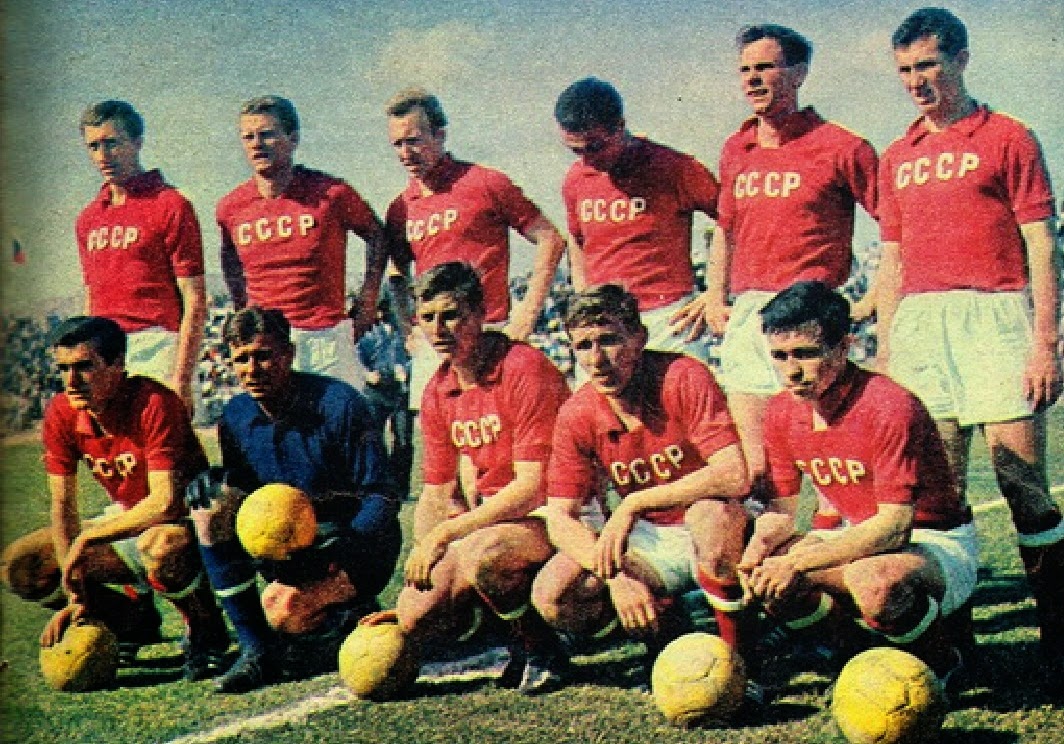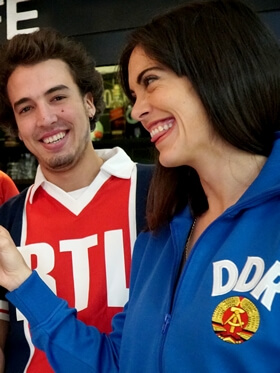Football in Russia is a deeply rooted sport. This rooting that began more than a hundred years ago leads us to its first international match in 1912, at the Swedish Olympic Games. The opponent was Finland and the match ended with a 2-1 loss. From these beginnings, a long history began in which soccer and political circumstances will intermingle. The Russian Revolution and the fall of the Tsarist Regime of the Russian Empire will bring with it the union of sports forces from all the states that formed the Soviet Union. With the fall of the Communist Regime, each State returned to its independent sports federations and its national teams, such as the Russian team or the Ukraine team.
After the Russian Revolution, clubs will be founded by the union of estates, associations, ministries. This is how the town's football club will appear, such as Spartak and the Dynamo where the members of the secret services and the Ministry of the Interior met to play, the army for the CSKA or the Lokomotiv where the workers of the railway industry were located.
The record of this team is not brilliant in terms of titles but it does allow us to have a still photograph of what their career has been that we can summarize in this sentence: a team that is respected and feared, an expert in the Euro Cup competition that has won in one occasion in 1960, where it has always been very effective, that has fought in the round of 16, quarterfinals and semifinals for the titles, that has always been there, with a game based on their physical strength and the tactical discipline of the group against the individualities, a style of play imposed to their rivals.
Here is a photo of the Soviet national football team that participated in the 1962 World Cup organized in Chile. The Soviet team lost in the quarterfinals to the host team, Chile, in a match played on June 10, 1962 in Arica.

SIGNIFICANT RESULTS OF THE SOVIET UNION IN WORLD CUP, EUROCOPAS AND OLYMPIC GAMES:
WORLD CUP:
• 1966 England World Cup: they reach the semifinals where they lose to the Federal Republic of Germany by 2 to 1.
EUROPEAN CHAMPIONSHIPS:
• 1960 European Championship: Champions, their first Euro Cup
• 1964 Euro Cup: they play the final against Spain and lose.
• 1972 Euro cup: they will reach the final against Germany but will lose by remaining second.
• 1988 European Championship: finalist against the Netherlands. Second place.
OLYMPIC GAMES:
• 1956 Melbourne Olympic games: The Soviet Union football team won the Gold Medal.
• 1972 Olympics: win the ex quo Bronze Medal with East Germany, tie 2-2.
• 1976 Olympics: The Soviet Union Olympic football team win the Bronze Medal.
• 1988 Olympic Games: Gold medal.
After the fall of the Soviet Union in 1991 a period of dismantling of the sports structures of the Republics of the USSR occurs and the teams of each independent nation will be founded again.
LEGENDARY PLAYERS OF SOVIET UNION FOOTBALL HISTORY:
The 1960s: Lev Yashin the Moscow-born goalkeeper named the "Black Spider." The black colors of his shirt gave him the name but also his tentacular ability to stop the shots. He was a national hero and won the Ballon d'Or in 1963. Thanks to his ability to stop everything, the Soviet Union team won the 1960 Euro Cup and the Gold Medal at the 1956 Olympics. Keep in mind that he is the only goalkeeper to have won the Ballon d'Or, making him considered one of the best goalkeepers in football history.
The 70s: Oleg Blokhin the Ukrainian center forward who still holds to his credit the title of top scorer par excellence of the Soviet Union with 42 goals. Dynamo Kyiv is the team where he spent most of his career in. His mother was an athlete and his father a football coach. With the national team, he did not reach titles in Euro cups or World Cups but his game contributed to the Bronze Medals at the 1972 and 1976 Olympics. He was a Ballon d'Or in 1975 and left a long mark for his technical and very fast playing.
The 80s: Igor Belanov, also Ukrainian, Ballon d'Or in 1986, forward, efficient, high speed, called The Rocket. Participated in the selection of the USSR that reached the end in the Eurocopa of 1988. With the selection played thirty-three parties. He debuted at SK Odessa, also played for Dynamo Kyiv and was able to leave the Soviet Union to play for two German teams; Borussia Moenchengladbach and Eintracht Braunschweig. At the World Cup in Mexico, he shone like never before scoring a triplet in eighths.
In our section of classic USSR shirts, you can see some examples of replicas of Soviet football shirts and their changes in different decades. As you can see, the base of the Soviet kits has always been a red shirt with white shorts and red socks. As examples, we leave you a photo of the mythical Soviet Union shirt in the World Cup in Spain 82, one of our clients' favorites:
For the second shirt, white was the color chosen for both: shirt, shorts, and socks. The abbreviation CCCP, Union of Soviet Socialist Republics, will be repeated throughout the whole history. Below we present the shirt of the USSR Away kit at Mexico 1986:

Interesting to note that the football team of the Russian Empire wore the colors orange and black.
The shirts we collect in our selection offered are representative of the Soviet period. Football shirts highly appreciated by all fans, for their color, their impressive retro design, not so much for nostalgia for a political period but for the remembrance of an era of football in which the passion and dedication of the players generated a a lot of emotions that still resonate today in all football fans. A cruder football, in its purest form, served without as many accessories as today that allows us to dream about the epic of the best sport in the world.
 Retrofootball
Retrofootball  Belgium
Belgium  France
France  Germany
Germany  Italy
Italy  Portugal
Portugal  Spain
Spain  Switzerland
Switzerland  United Kingdom
United Kingdom  other countries
other countries  Retrorugby
Retrorugby 






Post Comments